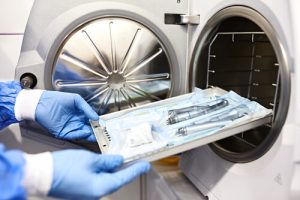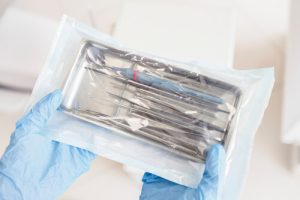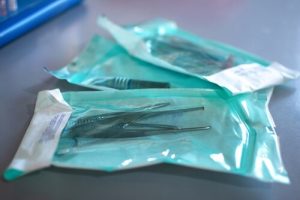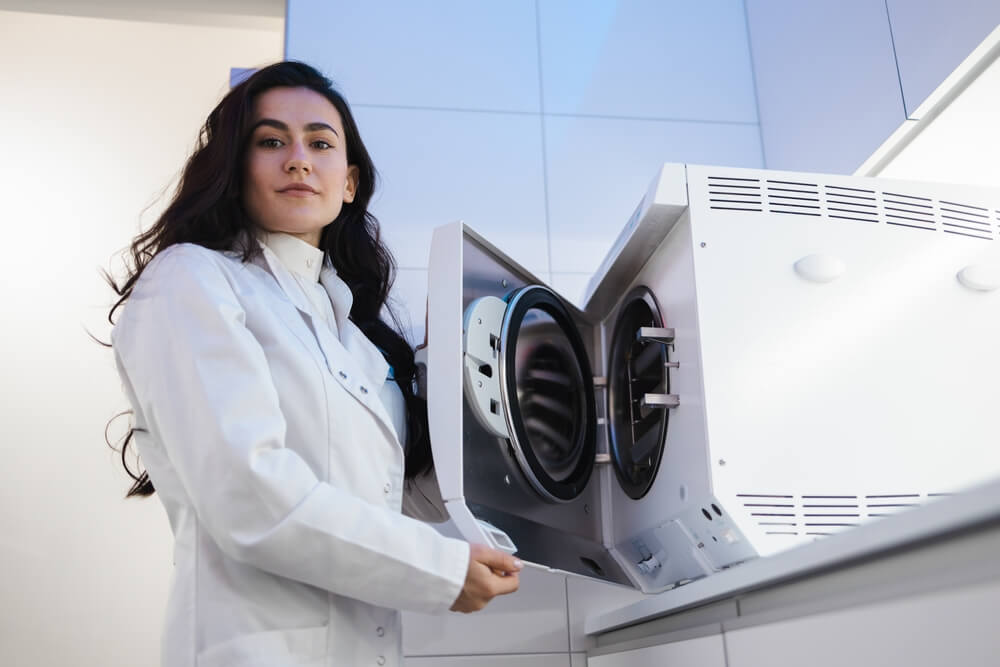In the pursuit of impeccable dental health and hygiene, an unsung hero often goes unnoticed: the autoclave, your essential sterilisation machine. An autoclave is a high-pressure, high-temperature device used to sterilise dental equipment, effectively killing all life forms, including bacteria, viruses, and spores. It serves as the first line of defence in a dental clinic, protecting patients and staff from potential cross-contamination and infection. As we delve deeper into the world of dental sterilisation, we will uncover the crucial role of this indispensable machine and its contributions to ensuring the highest standards of dental practice safety.
The Autoclave: Your Essential Sterilisation Machine
At the core of the autoclave’s impressive sterilisation capabilities are three fundamental factors: temperature, pressure, and time. These elements work in unison within the autoclave to create an environment lethal to all microbial life.
- Temperature: Autoclaves, as steam sterilizers, typically operate at a high temperature of about 121 degrees Celsius (250 degrees Fahrenheit), which is well beyond the heat tolerance of most microorganisms. This extreme heat denatures proteins, disrupts cell membranes, and destroys nucleic acids, thereby killing bacteria, viruses, fungi, and spores.
- Pressure: The second essential element in the steam sterilisation process is pressure. Operating at around 15-20 psi (pounds per square inch) above atmospheric pressure, the autoclave ensures that the steam penetrates even the most resilient materials and hard-to-reach cavities of sterilised items. The increased pressure also aids in raising the boiling point of water, allowing the steam to reach the necessary high temperatures.
 Time: The duration of exposure to the high temperature and pressure also plays a significant role in sterilisation. The standard autoclaving cycle is typically around 15-20 minutes once the desired temperature and pressure have been reached. The exact timing can vary based on the volume and density of the items being sterilised. Time is critical as it ensures complete steam sterilization, eliminating even heat-resistant spores.
Time: The duration of exposure to the high temperature and pressure also plays a significant role in sterilisation. The standard autoclaving cycle is typically around 15-20 minutes once the desired temperature and pressure have been reached. The exact timing can vary based on the volume and density of the items being sterilised. Time is critical as it ensures complete steam sterilization, eliminating even heat-resistant spores.
The science behind autoclave sterilisation is a well-orchestrated balance of temperature, pressure, and time, working together to create a hostile environment for microorganisms. This trifecta is fundamental in maintaining the sterile conditions necessary in various healthcare facilities, including healthcare, laboratory work, and more.
Ensuring Safety: The Autoclave’s Role in Dental Infection Control
The autoclave’s role in dental infection control is pivotal, and its significance cannot be overstated. Dental offices are frequented by numerous patients daily, and a wide array of dental procedures are performed, from routine cleanings to more invasive surgeries. All these processes involve using various instruments that come in direct contact with oral tissues, blood, and other bodily fluids. Without stringent sterilisation practices, these tools could become vehicles for the transmission of infectious diseases.
- Primary Warrior Against Infections: By utilising high pressure and temperature, the autoclave effectively sterilises dental instruments, eliminating all forms of microbial life, including resistant spores. This process prevents the spread of pathogens and reduces the risk of post-procedural infections.
- Prevention of Cross-Contamination: The autoclave isn’t limited to sterilising single-use instruments. It is also used to sterilise dental handpieces, which are used across multiple patients. Through this sterilisation, the risk of cross-contamination is significantly mitigated. Following the standard practices is crucial to successfully perform our duties and responsibilities, like using appropriate personal protective equipment and sterile instruments. Doing so prevents the spread of diseases and keeps your patients safe. One of the essential requirements to maintain a secure and healthy environment for dental patients is sterile equipment.
 Preserving Sterility of Tools: Dental surgical instruments are typically packed in pouches before being placed in the autoclave, and they remain sealed until they’re needed. Please pay attention to the maximum acceptable load size and weight, as specified by the producer of the autoclave. Biological and chemical indicators are essential to ensure that the sterilisation processes run correctly. This process ensures the sterility of the tools is preserved, contributing to overall hygiene.
Preserving Sterility of Tools: Dental surgical instruments are typically packed in pouches before being placed in the autoclave, and they remain sealed until they’re needed. Please pay attention to the maximum acceptable load size and weight, as specified by the producer of the autoclave. Biological and chemical indicators are essential to ensure that the sterilisation processes run correctly. This process ensures the sterility of the tools is preserved, contributing to overall hygiene.- Foundational to Safe Dental Practices: The autoclave’s role as the essential sterilisation machine sets the standard for a safe, hygienic, and trustworthy dental practice. It safeguards the health of both patients and dental professionals.
In essence, the autoclave is an irreplaceable asset in the field of dental infection control, fulfilling several critical roles to ensure a safe and sterile environment.
The Autoclave as an Irreplaceable Tool
The autoclave holds a vital position in the sphere of infection control and sterilisation due to several reasons, solidifying its status as an irreplaceable tool.
- Efficient Sterilisation: An autoclave can achieve complete sterilisation, eliminating all forms of microbial life. This level of sterilisation is hard to achieve with other methods, making the autoclave an invaluable tool, especially in settings where stringent hygiene is paramount.
- Broad Spectrum Efficacy: The autoclave is effective against various microorganisms, including bacteria, viruses, fungi, and even heat-resistant spores. It provides a comprehensive solution to sterilisation needs.
- Deep Penetration: The high pressure in an autoclave allows steam to penetrate deeply into the materials and reach all surfaces of the items being sterilised, including hard-to-reach crevices that an ultrasonic cleaner cannot reach.
- Safety: Autoclave sterilisation is a safe method, with no harmful residues left on the sterilised items or released into the environment, unlike some chemical sterilisation methods.
- Versatility: Autoclaves can sterilise a broad range of materials, from medical and dental instruments to laboratory equipment. This versatility adds to its irreplaceable nature.
- Standardisation: Autoclave use is a standard practice in healthcare, research, and other fields. It provides a reliable and universally accepted method of sterilisation.
These reasons underline the autoclave’s unique position as an essential sterilisation machine and its irreplaceable role in maintaining the highest standards of safety and hygiene in various industries.
Frequently Asked Questions About Autoclaves
- What size of autoclave should I choose?
- What are the key features to look for in an autoclave?
- How do I determine the right temperature and pressure settings for my needs?
- Should I choose a gravity or vacuum autoclave?
- What are the maintenance requirements for an autoclave?
 What safety features should an autoclave have?
What safety features should an autoclave have?- How energy efficient are autoclaves?
- What materials can be sterilised in the autoclave I’m considering?
- Does the autoclave meet the required industry standards and certifications?
- What is the lifespan of an autoclave, and does the manufacturer offer a warranty?
- How does the autoclave handle waste management?
- How user-friendly is the autoclave’s interface?
- Should I opt for a manual or automatic autoclave?
- Does the manufacturer provide good customer service and technical support?
- What is the cost of operation and ownership over the life of the autoclave?
These questions can guide you in choosing an autoclave that fits your specific needs, ensuring that you make a well-informed decision.
References:
https://www.cdc.gov/infectioncontrol/guidelines/disinfection/sterilization/steam.html
https://www.sciencedirect.com/topics/engineering/steam-sterilization
https://tuttnauer.com/blog/autoclave
https://www.steris.com/healthcare/knowledge-center/sterile-processing/everything-about-autoclaves


